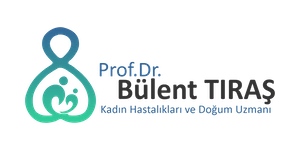
Prof. Dr. M. Bülent Tıraş, renowned in Turkey for his pioneering work in IVF treatments, reproductive health, and gynecology, graduated from Ankara University Faculty of Medicine in 1984. After his compulsory service, he completed his specialization in Obstetrics and Gynecology at Ege University.
Between 1989 and 1990, he trained extensively in IVF, endoscopic surgery, infertility, and microsurgery at the University of London, Royal Postgraduate Medical School, Hammersmith Hospital. In 1995, he studied IVF and microinjection techniques at Assaf Harofeh Medical Center in Israel. In 2000, he received training in “Reproductive Endocrinology and IVF” at The Johns Hopkins University Medical School in the USA, and also attended an advanced endoscopic surgery program in Chattanooga, USA, the same year.
In 1994, he began his academic career as an assistant professor at Gazi University Faculty of Medicine, Department of Obstetrics and Gynecology, becoming an associate professor in 1997 and a full professor in 2003. He currently serves as the Director of the IVF Department at Acıbadem Maslak Hospital, applying the most up-to-date treatment methods in his field.
Roles and Contributions in Reproductive Health
Throughout his career, Prof. Dr. Tıraş has held active roles in various associations and institutions:
• Turkish Society of Gynecology and Obstetrics – 2nd Vice President
• Contraception and Reproductive Health Association – Vice President
• Platform of Specialty Associations – Spokesperson
He has also served in administrative roles within Gazi University Faculty of Medicine, including internship coordination, faculty board membership, and deputy directorship of the Family Planning, Infertility, and Reproductive Health Center. Externally, he has been a scientific commission member for the Turkish Ministry of Health General Directorate of Pharmaceuticals and Pharmacy and the General Directorate of Mother and Child Health and Family Planning.
Overview of IVF Treatment
Today, the chances of achieving pregnancy naturally have declined compared to the past due to lifestyle, dietary habits, environmental factors, genetic disorders, and increasing health problems. In women, common causes of infertility include advanced age, blocked fallopian tubes, ovulation disorders, congenital or acquired reproductive organ problems, and hormonal imbalances. In men, low sperm count and quality, genetic issues, and reproductive organ anomalies are leading factors.
In such cases, treatments such as medication, insemination, hormonal support, and IVF—assisted reproductive technologies—are considered. IVF has been practiced for more than 40 years and remains one of the most successful methods worldwide.
The process involves fertilizing eggs retrieved from the woman with sperm from the man in a laboratory, selecting healthy embryos, and transferring them into the uterus. After about 12 days, a pregnancy test is performed. Thanks to modern lab techniques, pregnancy can be achieved even in couples with very few eggs or sperm cells.
PRP Method in IVF Treatment
PRP (Platelet Rich Plasma) is an innovative method increasingly used in recent years to improve IVF success rates. PRP is obtained from the patient’s own blood, rich in platelets, and applied to the uterus or ovaries to promote tissue regeneration and activate cells.
Scientific studies show that PRP can help thicken the endometrium and improve egg quality. It has been particularly beneficial in women with low pregnancy chances or insufficient endometrial thickness.
Purpose and Mechanism of PRP
For the uterus to accept an embryo, the endometrium must reach a certain maturity. Surgeries, curettage, infections, or congenital issues can damage this tissue. PRP, rich in growth factors, stimulates its renewal.
In women with low ovarian reserve, PRP may stimulate stem cells, contributing to the formation of new and higher-quality eggs. This can increase success rates even in patients with previous failed IVF attempts.
Who is a Suitable Candidate for PRP?
• Women with multiple failed IVF attempts
• Patients with insufficient endometrial thickness
• Women with reduced ovarian reserve or approaching menopause
• Patients aiming to improve egg quality
Before the procedure, ultrasound evaluation and hormonal tests are conducted, and a personalized treatment plan is made.
PRP Success Rate and Duration
PRP is still a relatively new method, so long-term data are limited. However, current clinical studies show success rates of up to 60% in suitable patients. Its effects usually last for 3–4 months and can be repeated if necessary.
Conclusion
IVF treatment is a constantly evolving field, with new methods improving success rates every year. Innovative applications such as PRP increase pregnancy chances, especially in challenging cases. With the expertise and modern treatment approaches of Prof. Dr. M. Bülent Tıraş, many couples now have renewed hope of becoming parents.
test-tube baby
